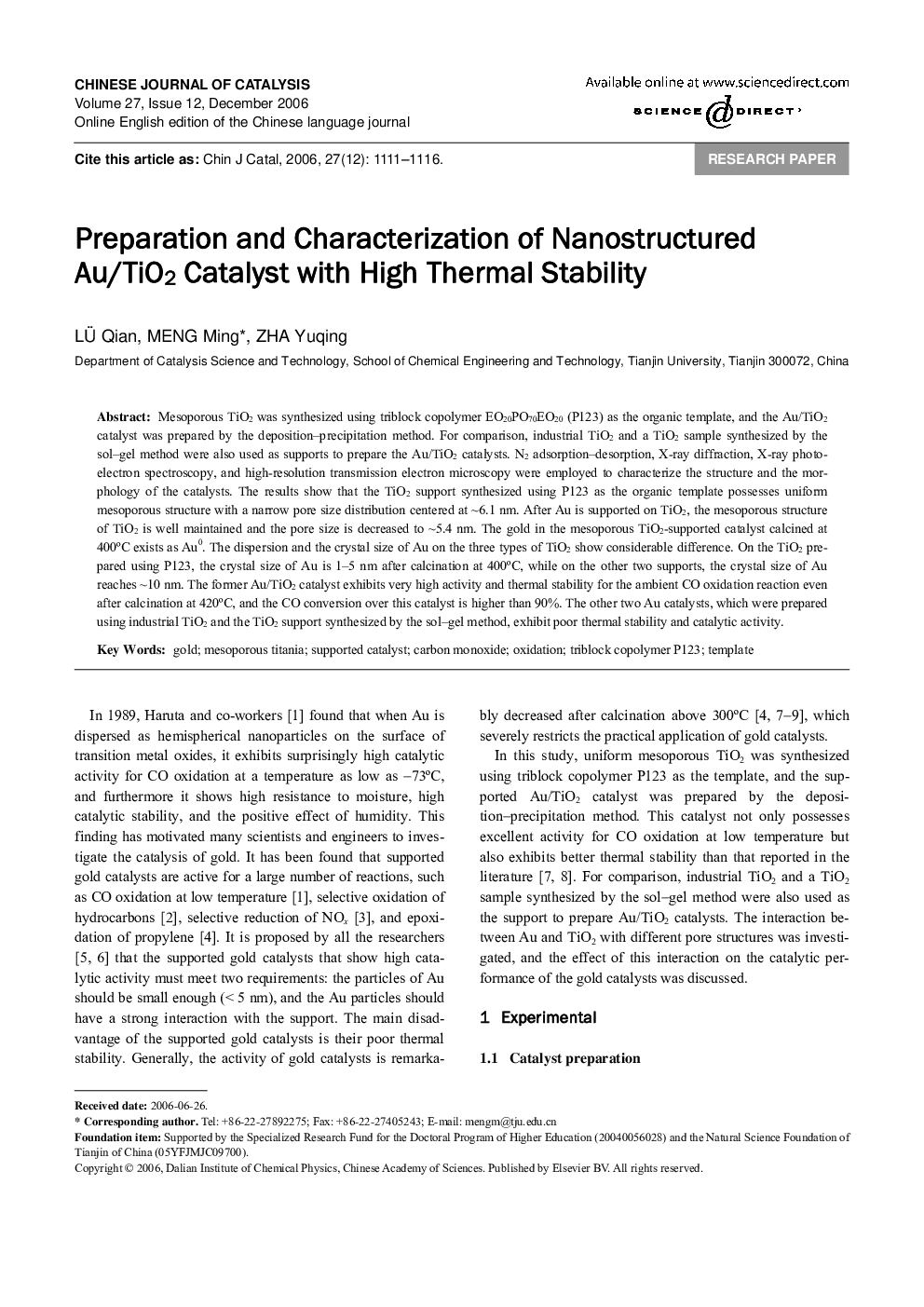| Article ID | Journal | Published Year | Pages | File Type |
|---|---|---|---|---|
| 60469 | Chinese Journal of Catalysis | 2006 | 6 Pages |
Mesoporous TiO2 was synthesized using triblock copolymer EO20PO70EO20 (P123) as the organic template, and the Au/TiO2 catalyst was prepared by the deposition-precipitation method. For comparison, industrial TiO2 and a TiO2 sample synthesized by the sol-gel method were also used as supports to prepare the Au/TiO2 catalysts. N2 adsorption-desorption, X-ray diffraction, X-ray photoelectron spectroscopy, and high-resolution transmission electron microscopy were employed to characterize the structure and the morphology of the catalysts. The results show that the TiO2 support synthesized using P123 as the organic template possesses uniform mesoporous structure with a narrow pore size distribution centered at ∼6.1 nm. After Au is supported on TiO2, the mesoporous structure of TiO2 is well maintained and the pore size is decreased to ∼5.4 nm. The gold in the mesoporous TiO2-supported catalyst calcined at 400°C exists as Au0. The dispersion and the crystal size of Au on the three types of TiO2 show considerable difference. On the TiO2 prepared using P123, the crystal size of Au is 1-5 nm after calcination at 400°C, while on the other two supports, the crystal size of Au reaches ∼10 nm. The former Au/TiO2 catalyst exhibits very high activity and thermal stability for the ambient CO oxidation reaction even after calcination at 420°C, and the CO conversion over this catalyst is higher than 90%. The other two Au catalysts, which were prepared using industrial TiO2 and the TiO2 support synthesized by the sol-gel method, exhibit poor thermal stability and catalytic activity.
